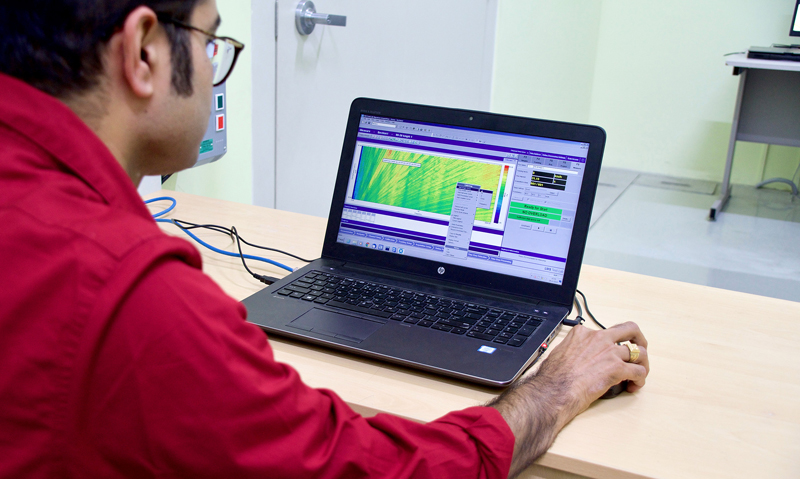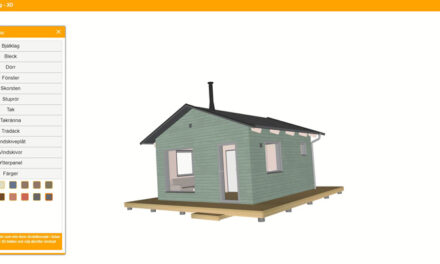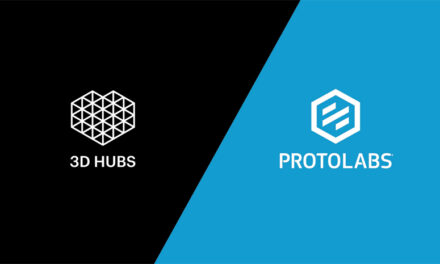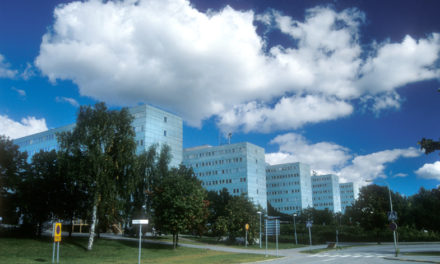Driving research and development in rubber technology
The Hari Shankar Singhania Elastomer & Tyre Research Institute (HASETRI) in India is dedicated to the independent research and development (R&D) of new and improved technologies for elastomers and tires. HASETRI’s primary goal is to foster the development and evolution of new technologies for the rubber and allied industries.
– Excellence comes not from words or procedures. It comes from an urge to strive and deliver the best, says Hari Shankar Singhania, founder, HASETRI. A mindset that says, ‘When it is good enough, improve it’ is a way of thinking that comes only from a power within.
Established in 1991 as an independent research and testing laboratory, HASETRI broadens the scope of material and tire research to make products that meet unparalleled standards in quality and performance. They accomplish this through mechanical, chemical, and analytical testing, simulation, performance evaluation and product certification.
Tire importance
While engines and transmissions are believed to be a vehicle’s most critical components, the development of the tire revolutionized road transportation. HASETRI’s facilities host three rubber trees, which 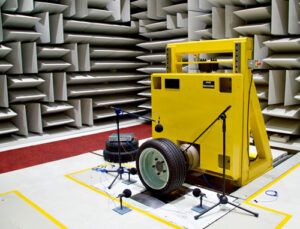 grow under the care of gardeners. Today, the institutes explore new ways to manufacture tires, use innovative materials and pioneer manufacturing methods.
grow under the care of gardeners. Today, the institutes explore new ways to manufacture tires, use innovative materials and pioneer manufacturing methods.
HASETRI’s research includes the development and testing of new materials, new aggregation methods, innovative shapes and designs. Each sample is tested in sophisticated laboratory equipment to predict the product’s performance in real-life conditions that include structural durability, abrasion (wear), etc.
– We stand at a crossroads today, says Dr. Rabindra Mukhopadhyay, director and chief executive, HASETRI. Resources on earth are limited and we need to re-invent mobility and develop more sustainable means of transportation, without which our existence is threatened. With our advanced research on tire technology, we strive to contribute to a better, more sustainable world and economy.
Electrified vehicles require different tire characteristics
HASETRI also assesses the acoustic properties of tire materials and designs. This is crucial as government and regulatory institutions continue to impose stricter limitations on a vehicle’s acceptable noise levels, making the tire’s noise performance critical. Tire noise, or the sound produced by the friction of tires on the road surface, is one contributor to a vehicle’s noise level. Unlike internal combustion engine (ICE) cars, where the engine masks road noise, the road noise from electric cars becomes more apparent since electric cars, of course, do not feature a loud combustion engine. In addition, the battery in hybrid and electrical vehicles increases vehicle weight by 10 to 20 percent, which boosts instant torque generations in these vehicles and increases the demand on the tires.
To design tires with high noise levels at low vehicle speeds and low noise levels at high vehicle speeds, the HASETRI lab features extensive noise and vibration assessment and testing capabilities. Lingineni 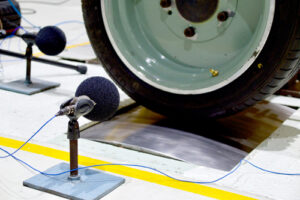 Madhav is a test engineer in HASETRI’s Tire Mechanics Group, which deals with noise, vibration, harshness, (NVH) and handling properties of tires and related products. As a test engineer, Madhav ensures the smooth operation of different tests as per various national and international standards. He also develops new test methods to further enhance the lab’s capabilities and carry out NVH studies, which contribute to providing noise abatement solutions at both the components and vehicle levels.
Madhav is a test engineer in HASETRI’s Tire Mechanics Group, which deals with noise, vibration, harshness, (NVH) and handling properties of tires and related products. As a test engineer, Madhav ensures the smooth operation of different tests as per various national and international standards. He also develops new test methods to further enhance the lab’s capabilities and carry out NVH studies, which contribute to providing noise abatement solutions at both the components and vehicle levels.
Through the use of Siemens Digital Industries Software solutions Simcenter Testlab software and Simcenter SCADAS hardware, the HASETRI tire mechanics department carries out various NVH-related tests, such as noise level measurements at constant speed, speed-sweep tests on the tire test rig located in a semi-anechoic chamber, in-cabin and external noise measurements on the vehicle level at designated test tracks across India as well as pass-by and coast-by noise measurements. The department engineer also performs modal testing on tires and other relevant industrial components.
– Simcenter testing solutions have expanded our existing tools and skills set to explore certain aspects of noise and vibration testing, says Madhav. Simcenter tools have been critical in reducing the time needed for data acquisition and data processing. Another benefit Simcenter testing solutions provide is the ability to rapidly access different areas and domains during the testing process. The support and assistance from the Simcenter technical team to resolve hardware-related and technical and software-related queries have been extremely valuable.
Madhav continues, – The tests we conduct are important considering regulatory requirements, OE specifications, and benchmarking. They are also vital as we strive to continuously improve our understanding of the NVH domain and move in a direction to contribute to NVH solutions both at the national and international levels.
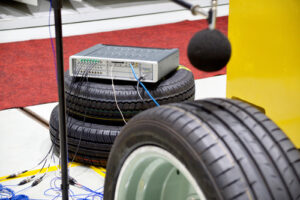 Sound quality is an important criterion for the automobile industry. Moreover, new drive and fuel concepts, tightened ecological specifications, increase of vehicle classes and increasing diversification, challenge the acoustic engineers trying to create and preserve a pleasant cabin. Regulatory bodies are becoming more stringent in regard to NVH, especially in Europe. HASERTI believes it is important to provide accurate and reliable information on critical NVH matters during the initial design phase to meet these growing requirements and standards.
Sound quality is an important criterion for the automobile industry. Moreover, new drive and fuel concepts, tightened ecological specifications, increase of vehicle classes and increasing diversification, challenge the acoustic engineers trying to create and preserve a pleasant cabin. Regulatory bodies are becoming more stringent in regard to NVH, especially in Europe. HASERTI believes it is important to provide accurate and reliable information on critical NVH matters during the initial design phase to meet these growing requirements and standards.
HASETRI’s NVH section has 10 highly skilled engineers who are involved in carrying out advanced NVH testing and research. In 2014, HASETRI partnered with Siemens to establish an anechoic chamber with the latest technology, including the chassis dyno in the very early stages. HASETRI operates a cutting-edge testing facility suitable for basic testing to advanced engineering projects that require a high-channel count and special hardware (for example, multi-reference TPA and road noise). The Simcenter Testlab and Simcenter SCADAS hardware onsite is scalable and easily used for both the lab and mobile environments. HASERTI plans to use Siemens solutions for future projects.
– We are confident that our existing and future expansion plans would be well supported by Siemens, says Dr. Prasenjit Ghosh, Principal Scientist, HASETRI.
Increased testing efficiency
Besides using versatile testing solutions to provide customers with a wide range of possible NVH tests, HASETRI focuses on regular training of their engineers and customers to improve the quality of their delivered testing projects. – We are able to educate our customers through training by experts from Siemens, says Dr. Mukhopadhyay. – As a result of continuous interaction, we are able to improve the quality, reliability and repeatability of our testing, the interpretation of results and the testing times.

